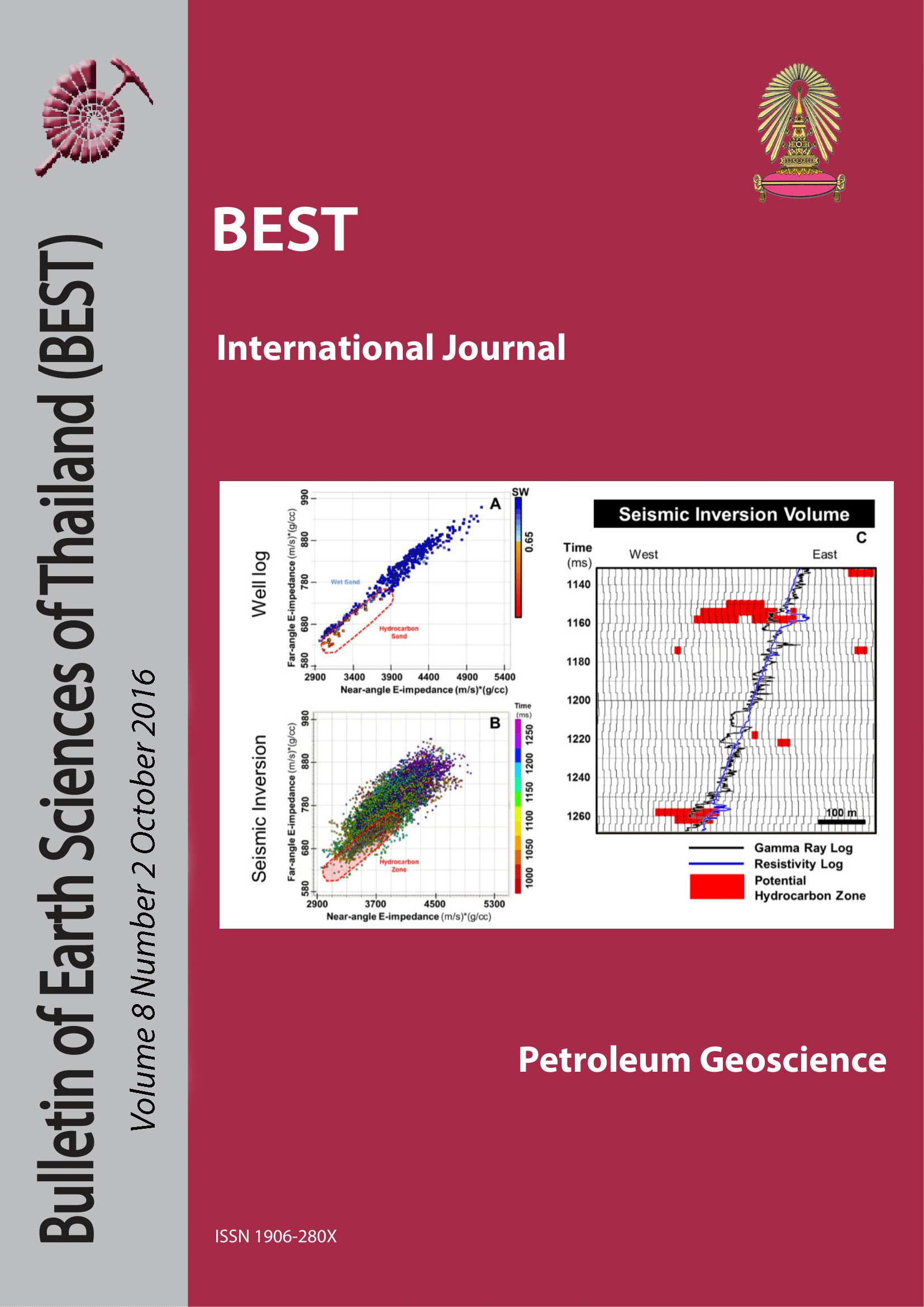RESERVOIR CHARACTERIZATION USING ROCK PHYSICS AND SPECTRAL DECOMPOSITION, PATTANI BASIN, GULF OF THAILAND
Main Article Content
Abstract
The aim of the present study is to apply rock physics for a better understanding of rock properties of various lithologies and apply spectral decomposition technique for the prediction of hydrocarbon zones in Pattani Basin of the Gulf of Thailand. Rock physics analysis reveals that seismic inversion techniques could not always differentiate lithologies and reservoir fluids due to similar rock physics properties of various lithologies. Reservoir wedge modeling, spectral decomposition of the synthetic and field data were conducted to understand the spectral decomposition response to thickness variation and reservoir fluids. Results revealed that gas saturated zones have high amplitudes as compared to water-wet zones, and the contrast is significant in the case of extremely low frequencies (from 10 to 15 Hz) outputs of far angle partial stacks. Organic shales show bright amplitudes on the seismic section, which are similar to the gas sands. However, spectral decomposition of synthetic seismogram of these shales indicates that it consists of only relatively higher frequencies (greater than 25Hz), and low frequencies are missing within the organic shales. Based on the results of synthetic modeling, it is inferred that gas sands can be differentiated by using low frequencies (10 to 15 Hz). Horizon slices, extracted from low-frequency volumes of the spectral decomposition of far angle partial stacks show the spatial distribution of hydrocarbons which match with existing well data. Hence, this workflow is useful for reservoir characterization where conventional seismic inversion techniques fail due to similar rock physics properties of different lithologies and fluids.
Article Details

This work is licensed under a Creative Commons Attribution-NonCommercial-NoDerivatives 4.0 International License.
Copyright © 2008 Department of Geology, Faculty of Science, Chulalongkorn University. Parts of an article can be photocopied or reproduced without prior written permission from the author(s), but due acknowledgments should be stated or cited accordingly.
References
Ahmad, M. N. and Rowell, P., 2013, Mapping of fluvial sand systems using rock physics analysis and simultaneous inversion for density: case study from Gulf of Thailand: First break, v. 31, May 2013, p. 49-54.
Castagna, J. P. and Sun, S., 2006, Comparison of spectral decomposition methods, First Break, 24, p. 75-79.
Castagna, J. P., S. Sun, and R. W. Siegfried, 2003, Instantaneous spectral analysis: Detection of low-frequency shadows associated with hydrocarbons: The Leading Edge, 22, p. 120–127.
Chen G., G. Matteucci, B. Fahmy, C. Finn, Spectral-decomposition response to reservoir fluids from a deepwater West Africa reservoir, 2008, Geophysics ,Vol. 73, NO. 6, p. C23–C30
Deng, J., D. Han, J. Liu, Q. Yao., 2007, Application of Spectral Decomposition to Detect Deepwater Gas Reservoir, SEG Annual Meeting, p. 1427-1430.
Li Y, Guo ZQ, Liu C,et al.,2015, A rock physics model for the characterization of organic-rich shale from elastic properties, Petroleum Science,v.12,issue 2, p.264-272.
Tai S., C. Puryear, J. P. Castagna, 2009, Local frequency as a direct hydrocarbon indicator: SEG Annual Meeting, p. 2160-2163.


